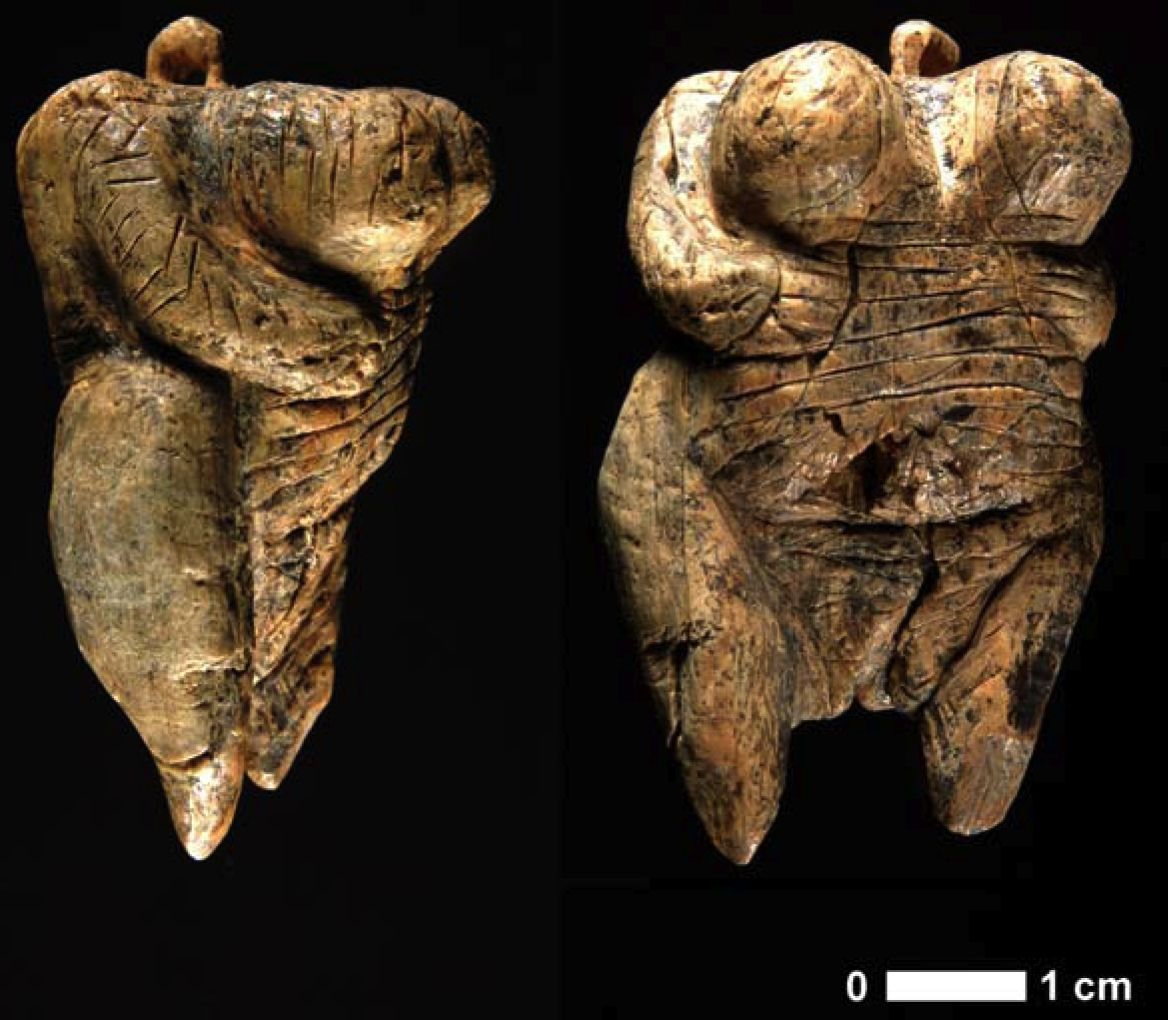 |
| "The Hohle Fels" figurine |
In the realm of prehistoric art, there's a type of small figurine made of stone, bone or ivory that is famous. It features exaggeratedly large breasts, hips and buttocks.
Popularly called "Venus figures," these tiny statues were crafted by human ancestors living in locations across Europe and Asia starting around 35,000 years ago. Most often, the pieces have been interpreted by academics and journalists as fertility figures that could be used ritually, or as what essentially amounts to hand-held pornography, produced by men for other men — the logic here being that sexual images supposedly arouse males more than females.
In an article called "Science, the Media, and Interpretations of Upper Paleolithic Figurines" in the September issue of the journal American Anthropologist, anthropologists April Nowell and Melanie L. Chang of the University of Victoria in British Columbia, Canada, question these interpretations. Crediting scholars who also contested them in previous articles, Nowell and Chang offer numerous scholarly citations to prove that this sexualized vision of these figurines is still prevalent in academia. I noticed myself that when a new figurine dating to 35,000 years ago — "the Hohle Fels" figurine — was discovered in 2009, one archaeologist told The New York Times that the figure "could be seen as bordering on the pornographic" and went on to say in Science that our ancestors at this time "were sex-mad."
Science-oriented media, in fact, according to Nowell and Chang, do often echo the academic, sexualized discourse. Do these figurines represent early pornography? Science asked. Nature dragged out phrases like "prehistoric pinup" in referring to the object's "almost aggressively sexual nature." In Discovery magazine in 2011, the more general claim was made that the objectification of women can be traced "deep into the mists of prehistory."
Nowell and Chang report, though: that the figures of this time period are far too variable in form to be reduced female anatomy; that there's no evidence these small statues were made by men for men; and that, in any case, it's poor practice to assume that our ancestors would have responded to hyper-female figurines in any certain way. "The assumption that Paleolithic people would have responded to images of female nudity in the same manner as modern people — or, rather, a sample of modern people drawn from a single Western culture group at a specific point in time — is untenable," they write. Response to art "is highly culturally mediated," they say, and thus likely to differ across time.
In an interview conducted earlier this week by email, I asked Nowell to explain her perspective further. [...] npr.org/
Relacionado: Galería de Venus paleolíticas







No hay comentarios:
Publicar un comentario